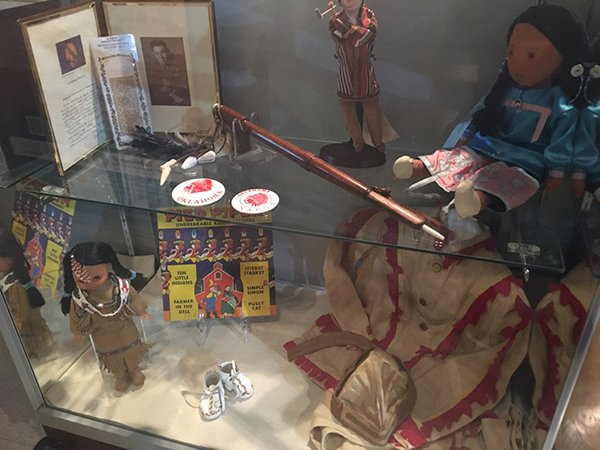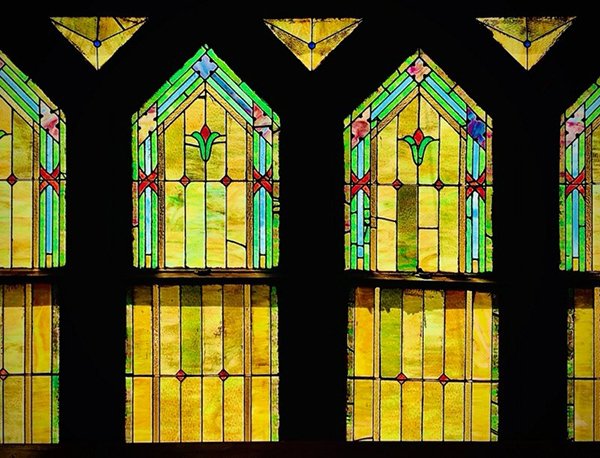Greetings from the (admittedly very messy) desk of the Director of Public History! It has been humbling to witness all the hard work and energy that went into our projects this year. Despite the stress of facing a global pandemic that brought many challenges and disappointments, our students and colleagues completed truly inspiring projects, internships, exhibits, and research. It is a testament to the talent, strength and dedication of our program that we are entering the new year with overwhelmingly positive momentum.
 Public history graduate students went above and beyond in 2020, installing a major traveling exhibit, “Savages and Princesses: Persistent Native American Stereotypes” at the Stillwater Museum of History at the Sheerar. To make the exhibit accessible to the general public, they created a digital exhibit highlighting important and often controversial questions. The exhibit was the first of its kind featured at the museum, and encouraged ongoing conversations about the way Native American history is interpreted in permanent displays. We will have an expanded presence in our partnership with the Sheerar, as Dr. Matthew Schauer joins me on the Board of Directors this year.
Public history graduate students went above and beyond in 2020, installing a major traveling exhibit, “Savages and Princesses: Persistent Native American Stereotypes” at the Stillwater Museum of History at the Sheerar. To make the exhibit accessible to the general public, they created a digital exhibit highlighting important and often controversial questions. The exhibit was the first of its kind featured at the museum, and encouraged ongoing conversations about the way Native American history is interpreted in permanent displays. We will have an expanded presence in our partnership with the Sheerar, as Dr. Matthew Schauer joins me on the Board of Directors this year.
We had the honor of being welcomed into historic Vernon A. M. E. Church in Tulsa to help document the history of the structure’s century-old stained glass windows. When a file cabinet full of documents was discovered in the building’s attic, graduate students alongside Dr. Richard Boles cheerfully put on masks and rolled up their sleeves to help create an archive for their safe on-site preservation.
 We used cancelled internships to embrace new opportunities. Katanna Davis made possible the creation of our first-ever Social Media Intern—a position which will now become a permanent fixture of the department, and provide an ongoing opportunity for other graduate students. PhD student Jack Ketchem completed comprehensive genealogical and contextual research for the historic Edwards Store, one of the last remaining structures from the Butterfield Overland Trail; the hunt for its namesake’s origins took him (digitally) to many archives, including British commercial shipping records, demonstrating the international dimensions of Indian Territory. B Hinesley and Arlowe conducted numerous oral history interviews that expand and highlight LGBTQ+ history in Oklahoma. Emily Duncan and Jorge Chavez undertook documenting the history of Stillwater’s Booker T. Washington School, the only remaining all-Black school building in Payne County.
We used cancelled internships to embrace new opportunities. Katanna Davis made possible the creation of our first-ever Social Media Intern—a position which will now become a permanent fixture of the department, and provide an ongoing opportunity for other graduate students. PhD student Jack Ketchem completed comprehensive genealogical and contextual research for the historic Edwards Store, one of the last remaining structures from the Butterfield Overland Trail; the hunt for its namesake’s origins took him (digitally) to many archives, including British commercial shipping records, demonstrating the international dimensions of Indian Territory. B Hinesley and Arlowe conducted numerous oral history interviews that expand and highlight LGBTQ+ history in Oklahoma. Emily Duncan and Jorge Chavez undertook documenting the history of Stillwater’s Booker T. Washington School, the only remaining all-Black school building in Payne County.
These are just a few examples, and they are a testament to the depth and diversity of Public History at OSU. While 2020 was not the year we might have hoped for, it is one we will no doubt look back on as a wonderful foundation. We have been engaged in the kinds of meaningful collaboration that embody the very best of what public history can do. We are emerging with new long-term partnerships. We have exciting projects on the horizon. And we are on a mission—because History Is.
